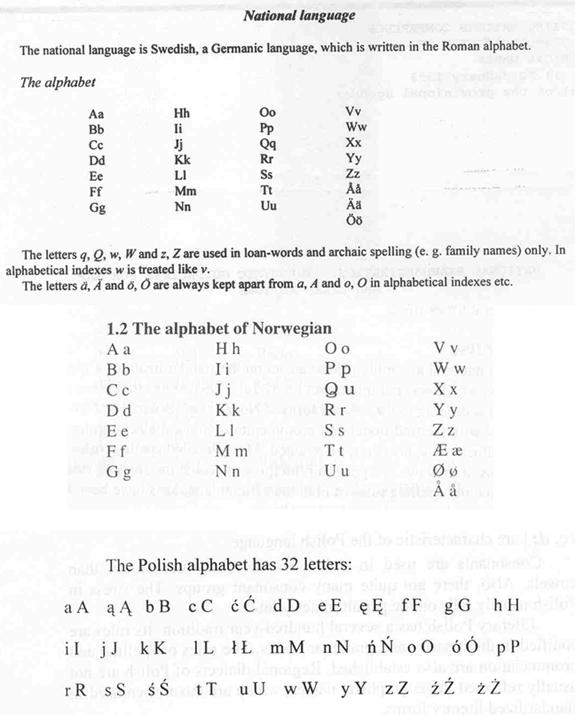|
S14: Toponymical Guidelines
|
|
|
|
|
|
2. The scope - B) Writing system(s) and pronunciation
|
|
|
-
Which writing-system is used (officially or otherwise) for the country’s language(s)?
-
Is there more than one writing-system in use?
-
In case of a non-Roman writing-system, which transliteration key is recommended for rendering geographical names in Roman script (if any)? See also the website of official transscription systems!
Example of officially recognised transcription system:

Examples of national alphabets from various toponymic guidelines:

-
Are there special signs (diacritical marks, non-standard Roman letters) included?
-
Which writing-system is used (officially or otherwise) for the country’s language(s)?
-
What is the alphabetisation, i.e. the sequence of the letters in the alphabet?
-
As far as the alphabet use is phonetic, which (combinations of) letters represent which sounds?
In Austria:
- Standard German is written in the Roman script.
- The alphabet is augmented with a non-standard Roman letter ß (‘scharfes s’) and one diacritical mark for vowel discrimination (a diaeresis or ‘Umlaut’ to be combined with a, o or u).
- Of ß only a lower-case variant exists; where capitalization is needed, it is transliterated by ss.
- Previously another variant of the Roman script was in use, called German or Gothic script. Nowadays it does not occur anymore, and it is therefore not further explained.
- As German spelling is not always clearly indicative of pronunciation, especially in the case of geographical names (which often show an archaic spelling, or originate from another language or dialects).
- The pronunciation of the names of Austrian settlements is listed name by name in a Gazetteer of Austria. The Gazetteer uses the IPA-alphabet.
- A general pronunciation key is nevertheless presented in the Guidelines.
Back to the checklist of Toponymic guidelines
|
  |
|
|
|
|
|
|
|